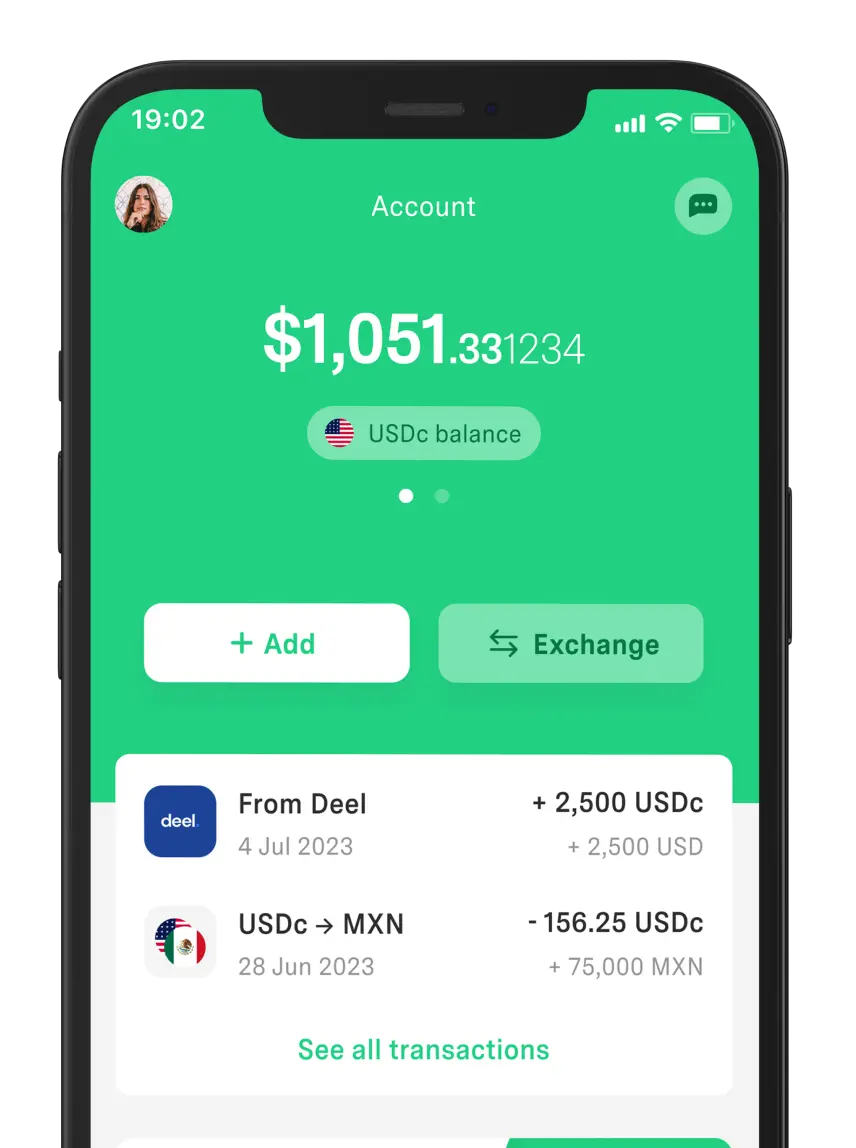 Your Money
Your Money What Are Personal Finance and How to Manage It
Your personal finances summarize your relationship with money. Discover why they matter and what to do to start managing them well.



Africa is a continent with 54 countries and multiple official currencies in circulation, of which only a few have global visibility. However, the influence of these currencies within each region is key to trade, investment, and economic integration.
That’s why in this article we’ll cover some of the most important currencies in Africa, their value, and their impact on economic development.
Africa uses 41 different currencies across its 54 countries. While many of them go unnoticed compared to other global currencies, they play a vital role on the continent.
Here, we focus on 10 African currencies that stand out for their use, stability, and economic influence in the region:
The rand is one of the strongest and most stable currencies on the African continent. In addition to being the official currency of South Africa, it also circulates in Lesotho, Namibia, and Eswatini, with significant regional presence in Southern Africa.
According to Statista charts, South Africa leads the African countries by nominal GDP thanks to a solid economic structure. This is why the rand is traded in international markets and used as a benchmark in other African economies.
Value of this African currency in USD: 1 ZAR = 0.053 USD
The Egyptian pound is one of the oldest currencies in Africa, backed by a large economy—especially in key sectors such as tourism, agriculture, and energy.
Although its use is limited to within the country, it also participates in bilateral exchanges with some neighboring nations. Furthermore, it plays a key role in North Africa and Mediterranean trade.
Despite its devaluation in recent years, the currency maintains its role as a symbol for the Arab-African economy.
Value of this African currency in USD: 1 EGP = 0.019 USD.
The naira is the official currency of the most populous country in Africa and one of the most devalued currencies on the continent. Persistent inflation and the scarcity of foreign currency have affected its monetary stability.
Even so, it remains relevant due to the size of Nigeria’s economy, ranking fourth by nominal GDP. Additionally, Nigeria plays a central role in the oil market, granting it a strategic position in the region.
Value of this African currency in USD: 1 NGN = 0.0006 USD.
Ethiopia enjoys one of the fastest-growing economies on the continent. However, its official currency—the Ethiopian birr—is restricted to domestic circulation, making its international convertibility limited.
Despite this, the country has established itself as a strategic player in the Horn of Africa. Therefore, its currency reflects the momentum of an economy that continues to gain regional prominence. One that is expanding and supported by agriculture, industry, manufacturing, and services.
Value of this African currency in USD: 1 ETB = 0.007 USD.
The Algerian dinar is a currency that circulates only within Algeria, one of the largest economies in North Africa.
Its strength largely stems from the country’s gas and oil reserves, which position Algeria as a major energy player in the region. However, its currency operates under a strict exchange control system and has limited convertibility outside the country.
Nonetheless, Algeria continues to establish itself as a key reference in the Maghreb.
Value of this African currency in USD: 1 DZD = 0.007 USD.
The Kenyan shilling stands out as one of the most active currencies in East Africa. The key? A country with a diversified financial system, continuous growth, and strong integration into regional trade.
Kenya has managed to establish itself as an economic and technological hub in the region, with Nairobi—its capital—serving as the epicenter of innovation, financial services, and commerce.
The shilling not only circulates within Kenya but is also used in Uganda, Tanzania, and other neighboring countries for informal trade.
Value of this African currency in USD: 1 KES = 0.007 USD.
Morocco has a diversified economy that combines tourism, agriculture, manufacturing, and foreign trade. This has allowed its currency—the Moroccan dirham—to establish itself as one of the most stable and controlled.
While its use is limited outside the country, its significance is felt through regional agreements and trade relations with Europe and West Africa.
Moreover, Morocco promotes an active policy of economic cooperation with other countries in the Global South, further strengthening the dirham’s profile.
Value of this African currency in USD: 1 MAD = 0.108 USD.
The Ugandan shilling is the official currency of Uganda, a country advancing as an emerging economy in East Africa—particularly due to its growth in the energy, agriculture, and infrastructure sectors.
The Ugandan shilling carries little weight outside the region, as its primary use is restricted to national transactions. However, it is also accepted in border trade with countries like Kenya, South Sudan, and Rwanda.
Value of this African currency in USD: 1 UGX = 0.0002 USD.
Tanzania has a growing economy that stands out in East Africa due to its strategic position on the Indian Ocean coast. Moreover, its abundant natural resources and strong agricultural sector make it a key player in the region.
For this reason, the Tanzanian shilling maintains stable circulation domestically. It is also used in informal transactions in border areas.
This stability and consistent use have helped it remain relevant within the East African Community (EAC).
Value of this African currency in USD: 1 TZS = 0.0003 USD.
This currency faces a complex situation marked by deep devaluation, high inflation, and a constant loss of real value. Still, it remains the official currency of a country rich in natural resources.
The Sudanese pound is used only domestically, given internal political tensions and international sanctions. Unfortunately, it also lacks convertibility and has little influence beyond national borders.
Value of this African currency in USD: 1 SDG = 0.001 USD.
Check the sources for current exchange rates. The exchange rates described were taken on April 30, 2025.
Each African currency has a different value against the dollar. And they also face challenges similar to those of Latin American currencies, even though the geographical contexts differ.
However, it’s a shared process on the path to building a more solid and independent financial system—although they are still far from achieving the stability seen in some European or Asian currencies.
The CFA franc is the most widespread currency, as it is used in 14 African countries.
This African currency is divided into two zones:
1. The West African CFA Franc – managed by the Central Bank of West African States (BCEAO).
2. The Central African CFA Franc – managed by the Bank of Central African States (BEAC)
Although both provide exchange rate stability, they have been heavily criticized for their link to the French Treasury.
For some, the CFA franc represents a tool for monetary stability in regions with fragile economies. But for others, it symbolizes a modern form of colonial dependence.
Tensions escalated in 2019 when some Italian politicians accused France of profiting from the currency at the expense of African development. The truth is, to this day, this controversy persists and continues to raise questions about sovereignty, control, and the financial future of the continent.
Country | Official Currency | ISO Code |
Angola | Kwanza | AOA |
Algeria | Algerian Dinar | DZD |
Benin | West African CFA Franc | XOF |
Botswana | Pula | BWP |
Burkina Faso | West African CFA Franc | XOF |
Burundi | Burundian Franc | BIF |
Cape Verde | Cape Verdean Escudo | CVE |
Cameroon | Central African CFA Franc | XAF |
Chad | Central African CFA Franc | XAF |
Central African Republic | Central African CFA Franc | XAF |
Comoros | Comorian Franc | KMF |
Republic of the Congo | Central African CFA Franc | XAF |
Democratic Republic of the Congo | Congolese Franc | CDF |
Côte d’Ivoire | West African CFA Franc | XOF |
Egypt | Egyptian Pound | EGP |
Eritrea | Nakfa | ERN |
Ethiopia | Ethiopian Birr | ETB |
Gabon | Central African CFA Franc | XAF |
Gambia | Dalasi | GMD |
Ghana | Ghanaian Cedi | GHS |
Guinea | Guinean Franc | GNF |
Guinea-Bissau | West African CFA Franc | XOF |
Equatorial Guinea | Central African CFA Franc | XAF |
Kenya | Kenyan Shilling | KES |
Lesotho | Loti | LSL |
Liberia | Liberian Dollar | LRD |
Libya | Libyan Dinar | LYD |
Madagascar | Malagasy Ariary | MGA |
Malawi | Malawian Kwacha | MWK |
Mali | West African CFA Franc | XOF |
Morocco | Moroccan Dirham | MAD |
Mauritius | Mauritian Rupee | MUR |
Mauritania | Ouguiya | MRU |
Mozambique | Mozambican Metical | MZN |
Namibia | Namibian Dollar | NAD |
Niger | West African CFA Franc | XOF |
Nigeria | Naira | NGN |
Rwanda | Rwandan Franc | RWF |
São Tomé and Príncipe | Dobra | STN |
Senegal | West African CFA Franc | XOF |
Seychelles | Seychellois Rupee | SCR |
Sierra Leone | Leone | SLL |
Somalia | Somali Shilling | SOS |
Eswatini (Swaziland) | Lilangeni | SZL |
South Africa | Rand | ZAR |
Sudan | Sudanese Pound | SDG |
South Sudan | South Sudanese Pound | SSP |
Tanzania | Tanzanian Shilling | TZS |
Togo | West African CFA Franc | XOF |
Tunisia | Tunisian Dinar | TND |
Uganda | Ugandan Shilling | UGX |
Djibouti | Djiboutian Franc | DJF |
Zambia | Zambian Kwacha | ZMW |
Zimbabwe | Zimbabwean Dollar | ZWL |
Many African currencies are affected by issues such as inflation, volatility against the dollar, political tensions, or other factors. But this can happen even in the country with the world’s most expensive currency.
If you're in Latin America, consider using DolarApp to protect your money.
Why?
Because you can access account details as if you were in the U.S., giving you access to digital dollars. It’s simple, secure, and managed from your mobile phone.
Let’s not forget that U.S. currencies are a global benchmark for their stability and wide acceptance. That’s why it’s a good idea to have a wallet that allows you to protect your money from devaluation—like DolarApp.

The world has borders. Your finances don’t have to.
 Your Money
Your Money Your personal finances summarize your relationship with money. Discover why they matter and what to do to start managing them well.

 Your Money
Your Money European currencies go beyond the euro, as not all countries use it. Here’s the complete list of currencies by country.

 Your Money
Your Money In this post, we'll teach you how to convert your gross salary to net salary in Mexico so you know how much you really earn from your work.


